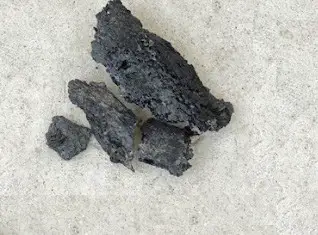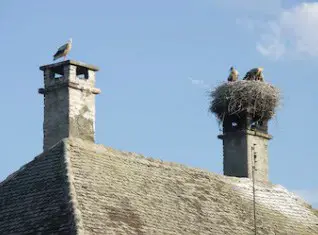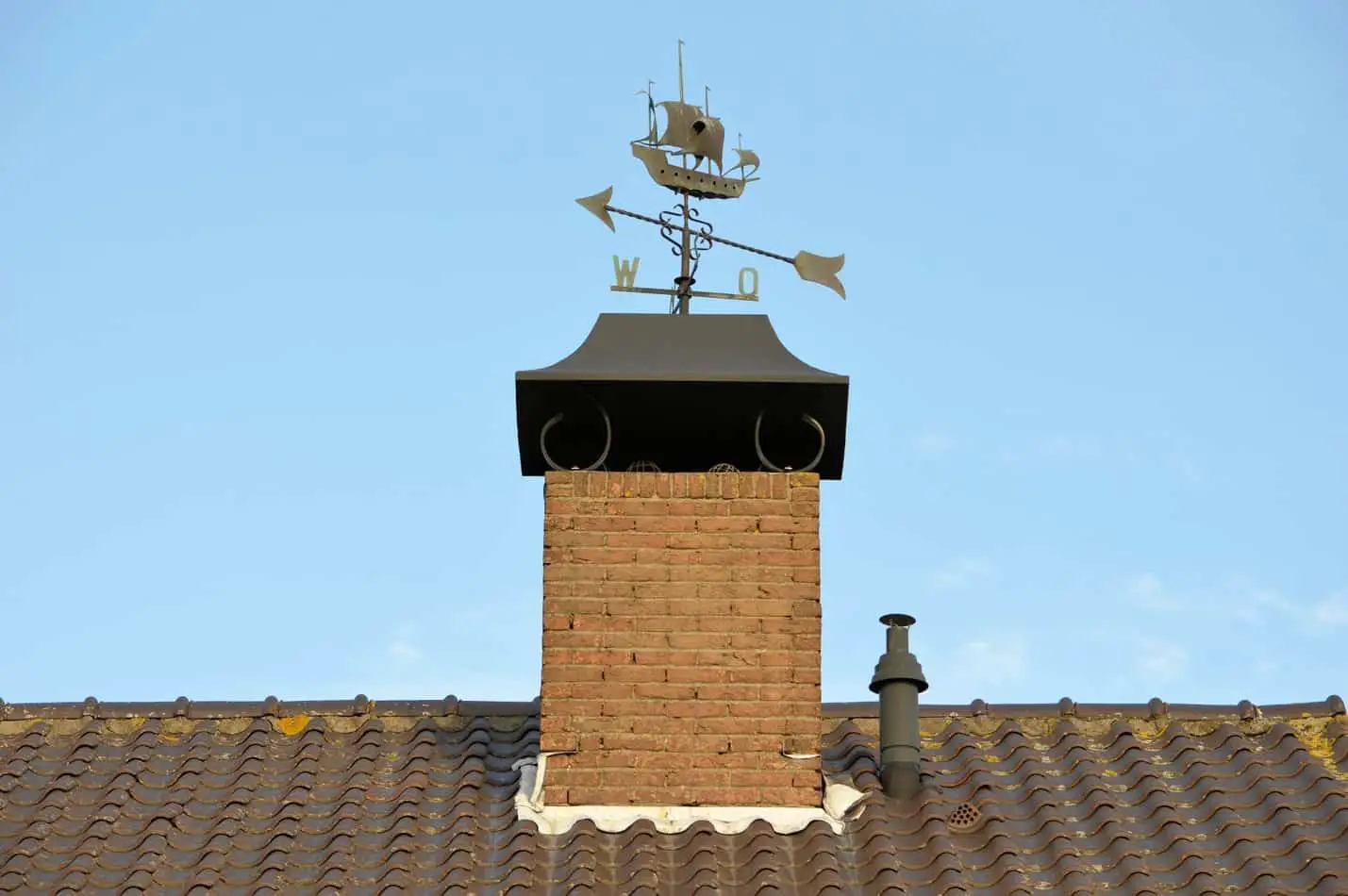Four low-cost ways how to stop wind noise from a chimney! Take a look at some ideas on how to get rid of that annoying whistle and wind noise from coming down your chimney on windy days.
I remember the day I was at my mother’s house for Thanksgiving dinner. It was a pretty cold and windy day that year.
We were all sitting at the dinner table, which happened to be about one room away from the fireplace.
While I was feasting on turkey, I couldn’t help but notice a low-pitched whistling noise coming from the other room.
It wasn’t obnoxiously loud, but it was loud enough to warrant my attention. I asked my mother if she was making tea or something of that sort.
Nope. She told me it was her chimney. She then started to explain all the different wind noises and whistling sounds it would make during the winy seasons.
I don’t have a chimney in my house, but I was reluctant to help my mother stop that annoying wind noise from the chimney.
After hours of research, I have found the best methods to stop wind noise from a chimney. I found a few low-cost solutions as well as a more expensive option to solve this problem.
I have compiled a small list of the best ways to get of wind noise in your chimney.
Install a Chimney Balloon
This chimney balloon from amazon is a great low-cost option to stop the wind noise from your chimney.
The creators of the chimney balloon have created a product that will keep the warm air in a while keeping the cold air out. This includes any excess wind coming down from the top of the chimney.
The chimney balloon acts similarly to a vacuum. It will fit in the chimney space with an air-tight fit to keep cold air from coming in.
Since the balloon will be blocking incoming air, this results in no wind noise. This chimney balloon is not a size fits all chimney.
You will need to measure your chimney to make sure it is the correct size and compatible with a chimney balloon.
This is actually the product I decided to go with for my mother’s chimney wind noise. Measure the chimney was easy once I followed the instructions by chimney balloon.
The installation was also quick and easy. After measuring my mother’s chimney, I went ahead and purchased this balloon.
The chimney balloon comes with an inflation tube that is used to inflate the balloon with your mouth. First, start by inflating the balloon a tiny bit so that it is like a floppy pillow.
Once there is a little bit of air in it, go ahead and place it inside your chimney and fully inflate it. It should fit nicely and snug once it is fully extended.
This solution is great to use if you do not use your chimney very often. If you find that you use your chimney frequently, then this option may not be the best for you.
You will have to deflate and inflate this balloon into your chimney every time you want to block out the wind noise.
Install a Chimney Flueblocker
This is a great alternative to the chimney balloon. This chimney flueblocker from amazon is well priced.
It is a dense wool pad that seals and insulates your fireplace or chimney. The wool is actually made up of sheep wool in a sheep facility in England.
It will fit into the narrow part of the flue just above the firebox. You can use this with or without a damper. The creators of this product have made it for practical use, which means it can easily be installed and uninstalled many times without issues.
Never light your fireplace with this blocker in place. Also, do not use this if you have a functional vented gas log fireplace.
Before purchasing a flueblocker, you will need to first measure your chimney, just like with a chimney balloon.
Once you have the measurements of your chimney, make sure to purchase a flueblocker that is a little bit larger than your measurements to ensure that there will be a nice and tight fit.
I personally have never used this product, but there are many positive reviews on amazon about this item. Many users have reported that this product works as intended.
Some users found that it is a little difficult to get it installed just right. Most of the users only recommended keeping it in place during times the chimney won’t be in use to avoid constant installation.
Do It Yourself Chimney Blocker Using Blankets or Pillows
The cheapest and quickest way to block a chimney without purchasing additional products is to use blankets.
Find some old, dirty, unused blankets that you don’t mind ruining. Go ahead and stuff the blankets up your chimney to create a shield from the outside wind coming down the chimney.
I warn you that doing this can get pretty messy due to all the creosote buildup on the chimney walls. I do not recommend doing this method unless it is in a very controlled environment.
If you were at work and your kids happened to start up the fireplace, it may lead to a potential house fire.
Don’t forget that it will also be a mess once you unplug your chimney of the wedged blankets.
It may also look a bit tacky if you were to have guests in your home and there were a few pieces of a blanket hanging down your chimney.
Overall, this method will work to stop your wind noise, but it is not really recommended due to its impracticality this gives. Not only is it impractical, but it is also quite dangerous.
An alternative to using blankets is to make your own chimney balloon. To make your own chimney balloon, you will need the following supplies:
- Drawstring trash bags
- High-quality pillows
- Zip ties
Simply place two to three high-quality pillows into a trash bag, depending on how big your chimney is. Place that trash bag into another trash bag and use the drawstrings to tie a tight knot.
Add the zip ties before the knot as an added safety measure to make sure the pillows don’t fall. Once you have created your chimney balloon, go ahead and stuff it up your chimney.
If it doesn’t stay in your chimney with a snug fit you may have to add another pillow or two.
How to Measure Your Chimney for a Chimney Balloon or Flueblocker
Before purchasing any type of chimney blocker, it is very important that you measure your chimney’s opening that you will be blocked first.
If you don’t measure your chimney, then there will be a slight chance that the product you purchase will either be too big or too small.
Your chimney may be difficult to measure with just a normal tape measure due to the small space.
I recommend using this carpenter’s ruler to measure the inside of your chimney. A carpenter’s ruler is a hard ruler that has a pivot point which makes it easy to use in hard-to-reach areas.
This type of ruler will help you get the most accurate reading. Not only is a carpenter’s ruler a lot more accurate, but it is also very flexible.
Install a Chimney Cap or Cowl
This is the last option I came across when I was researching ways to stop wind noise in my mother’s chimney.
A chimney cowl can be very expensive, like this one from amazon. Using a chimney cowl is extremely effective.
It will still allow for your chimney smoke to escape while also preventing excess wind noise from entering your chimney and going into your house. A chimney cowl is mostly used in professional buildings due to its effectiveness.
I would recommend getting a chimney cap like this chimney cap instead since they are at a much more reasonable price.
Chimney caps work similarly to a cowl, except they are just not as effective. A chimney cap usually caps off the very top of the chimney to minimize wind from traveling down into the house while still providing a means for the smoke to escape.
Finding a cowl or cap that will fit your chimney will also be a lot of work.
Not only do you have to go on your roof to find the correct measurements, but you will also have to climb back on the roof to install it.
The main downside to installing a chimney cap or cowl is not only the price, but you will most likely also need a professional to install it if you aren’t a handy person, to begin with.
Overall, a chimney cowl or cap is probably the best solution to wind noise in a chimney because you will be able to keep the practicality of your fireplace while it installed.
All the other options I have listed previously do not allow you to run your fireplace at the same time.
Just remember if you go this route, it will most likely not be cheap unless you are able to do it yourself.
Chimney Blockers vs. Cowls and Caps Which Is Better?
The short answer is none is better than the other. They both have their pros and cons. A chimney blocker is relatively cheap and easy to install compared to cowls and caps.
The main issue with a blocker is that you cannot use a fireplace while they are installed. This means that you will have to constantly be installing and uninstall the blockers as needed.
Also, these blockers will only prevent animals and critters from coming into the chimney while they are installed.
If you happen to forget to reinstall the blocker, then you are once again at risk for wind noise as well as animals coming into your chimney.
With a chimney cap or cowl, there will be no need for installing or uninstalling since it is placed at the top of the chimney.
The main issue with a cowl or cap is that they can be very pricey for what they are. Not only will you have to buy the product, but you will also have to pay someone to install it if you can’t do it yourself.
The good thing about a chimney cap or cowl is that they are long-lasting.
Once they are installed, you are good to go for years to come. You will never have to worry about touching it unless it were to break or come off.
A chimney cowl does, however, need maintenance a few times per year, depending on how noisy it gets. A chimney cowl spins when it comes in contact with the wind.
After a period of time, you may need to re-lubricate the rotating components.
Another great trait these 2 items have is that they will naturally keep animals away and out of your chimney due to their designs.
The only thing you may have to worry about is animals nesting on top or near your chimney.
In the end, it boils down to your personal preference and how often you will be using your chimney.
Different Noises a Chimney Can Make and What They Mean
Loud Popping Noises During Use

One of the most common noises a chimney can make is popping sounds. Loud popping noises are usually caused by creosote buildup.
Creosote buildup can pop as it heats up in a dirty chimney. Obviously, you would only hear these sounds when the chimney is active since it requires heat, but it can be annoying nonetheless.
Your main concern shouldn’t be about the popping noises.
The popping noises themselves usually aren’t too bad, but it is an underlying precursor to a life-threatening emergency. Having a dirty chimney with a lot of creosote buildup is a recipe for a chimney fire.
Making sure your chimney is regularly cleaned will not only reduce the popping noises it makes while active, but it will also help save your house in case of a fire.
This creosote cleaner from amazon is very cheap and works very well based on the user reviews. Simply throw the cleaner into an existing fire once a season to help get rid of creosote buildup.
Another reason you may hear popping is from the metal expanding in the chimney due to the heat. This is normal.
The metal expands when it is heated and then contracts when it is cooled. Expansion and contraction will increase or decrease depending on the temperature around the metal.
Animals in the Chimney

I didn’t think it was possible, did you? Animals can actually start to live at the top of your chimney.
You might hear scraping and scratching sounds as small animals like squirrels, raccoons, and birds may find themselves in your chimney. If you are really unlucky, birds may even start to nest at the top of your chimney.
This isn’t very common in big city areas. You can mostly experience this in some type of cabin setting out in the wilderness.
If you have animals that are finding their way into your chimney, it might be time to put a cap on the top of your chimney.
There are many different chimney caps that will work to prevent small animals from crawling inside the chimney.
If you already have a chimney cap and there is some type of nest or home at the top, then you may need to climb up there and clear it out.
If there is a bird’s nest with a lot of baby birds, then it may be wise to contact some form of animal control so as not to harm the birds.
Wind Noise in the Chimney
Wind noises in the chimney are usually associated with a strong wind blowing over a chimney. Usually, these chimneys lack a chimney cap, have a damaged cap, have openings, or have damage to the chimney itself.
Practically any type of opening or hole that shouldn’t be in your chimney can cause a rush of wind noise. The wind noise in your chimney will usually be intermittent and solely depends on the weather conditions outside.
There may be days when your chimney is whisper quiet, and then there may be times when the noise is unbearable.
If you have wind noise related to cracks or openings in your chimney, then these methods I have discussed in this article will not be of use to you.
You will have to contact a professional repairman to first repair the damages to your chimney. After your chimney is repaired, you can try implementing these methods if you still have wind noise.
Final Thoughts
There aren’t too many options available to help stop wind noise in a chimney. I personally recommend either the chimney balloon or the flue blocked due to the ease of use and practicality.
I wanted to choose a solution that would be easy for me to teach as well as easy to do for someone like my mother. The chimney balloon seemed to be the perfect option for this.
My mother has been using the chimney balloon for over a year now, and it has held up pretty well.
Although my mother only uses the fireplace during our short winter seasons here in California so, keep that in mind.
If you live in an area will you will constantly be installing and uninstalling the balloon, I may recommend you get the flue blocked instead.
The flueblocker is a more robust product in terms of re-installation and would most likely last a lot longer than a balloon.






